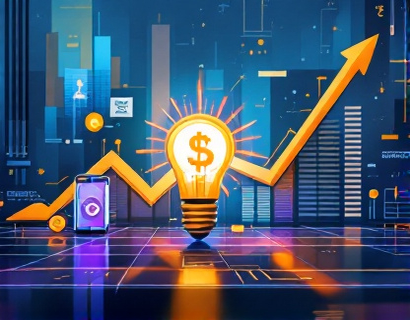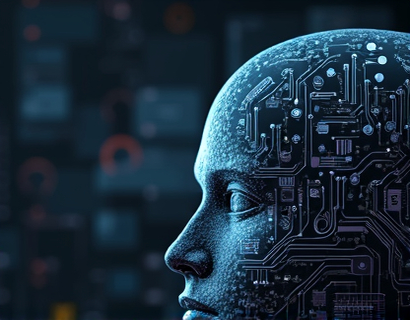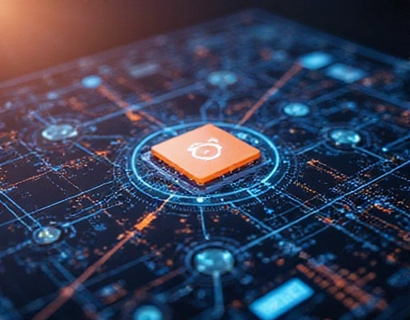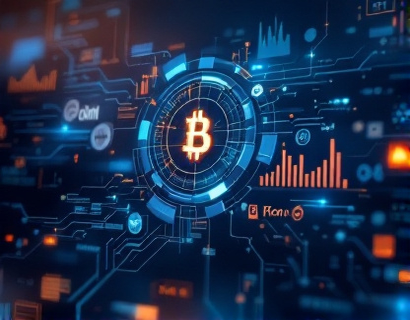Revolutionizing Digital Asset Management: The Decentralized dApp for Cross-Blockchain Conversions
The blockchain ecosystem has witnessed significant advancements in recent years, with decentralized applications (dApps) emerging as a pivotal force in transforming how digital assets are managed and utilized. Among these innovations, a groundbreaking dApp has been developed to address one of the most persistent challenges in the blockchain space: the seamless conversion of digital assets across different blockchains. This article delves into the features and benefits of this revolutionary dApp, designed specifically for blockchain professionals and digital asset managers who seek cutting-edge solutions to streamline their operations.
Understanding the Challenge
In the decentralized world of blockchain, digital assets are often confined to specific blockchains, each with its own set of protocols and standards. This fragmentation poses a significant challenge for users and organizations that need to transfer assets between different blockchain networks. Traditional methods of cross-blockchain conversion are often cumbersome, time-consuming, and prone to errors. These processes typically involve intermediaries, which not only increase costs but also introduce potential points of failure and security risks. The need for a more efficient, secure, and user-friendly solution has driven the development of this innovative dApp.
Introducing the Decentralized Solution
The new dApp is a decentralized platform that leverages the power of blockchain technology to facilitate seamless and secure cross-blockchain asset conversions. By eliminating the need for intermediaries, this dApp offers a more direct and efficient way to manage digital assets across multiple blockchain networks. The platform is built on a robust and scalable architecture, ensuring high performance and reliability even as the number of users and transactions grows.
Key Features of the dApp
- Cross-Chain Compatibility: The dApp supports a wide range of blockchains, including but not limited to Ethereum, Binance Smart Chain, Polkadot, and Solana. This broad compatibility ensures that users can convert assets between virtually any blockchain, making it an indispensable tool for those operating in a multi-chain environment.
- Automated Conversion Process: The conversion process is fully automated, reducing the risk of human error and speeding up the transaction times. Users simply need to initiate the conversion, and the dApp handles the rest, from asset locking to the creation of equivalent assets on the target blockchain.
- Enhanced Security: Security is a top priority in the design of this dApp. Transactions are executed using advanced cryptographic techniques and smart contracts, ensuring that asset transfers are immutable and tamper-proof. The decentralized nature of the platform also minimizes the risk of single points of failure.
- User-Friendly Interface: Despite its complex underlying technology, the dApp features an intuitive and user-friendly interface. Blockchain professionals and digital asset managers can navigate the platform with ease, accessing all necessary functions and information without requiring extensive technical knowledge.
- Real-Time Monitoring: Users can monitor the status of their asset conversions in real-time. The dApp provides detailed transaction histories and alerts, ensuring transparency and allowing users to stay informed every step of the way.
How It Works
The conversion process on this dApp is straightforward and efficient. Here’s a step-by-step breakdown of how it operates:
First, the user logs into the dApp and selects the source blockchain and the asset to be converted. The platform then identifies the equivalent asset on the target blockchain, ensuring that the conversion is accurate and compatible. Next, the user initiates the conversion process, and the dApp locks the assets on the source blockchain. The smart contract responsible for the conversion is executed, creating the equivalent asset on the target blockchain. Once the conversion is complete, the user receives notification and can access the new asset directly from the dApp.
The entire process is designed to be seamless and requires minimal user intervention. The dApp handles all the technical aspects, from communication between blockchains to the creation and management of assets. This level of automation not only saves time but also reduces the potential for errors, making the conversion process more reliable and secure.
Benefits for Blockchain Professionals and Digital Asset Managers
The introduction of this decentralized dApp brings numerous benefits to blockchain professionals and digital asset managers:
- Increased Efficiency: By automating the conversion process, the dApp significantly reduces the time and effort required to transfer assets between blockchains. This efficiency gain translates to faster project execution and improved operational workflows.
- Cost Savings: Eliminating intermediaries lowers transaction costs, making cross-blockchain asset conversions more economical. This cost advantage is particularly beneficial for organizations handling large volumes of transactions.
- Enhanced Security: The use of advanced cryptographic techniques and decentralized smart contracts ensures that asset transfers are secure and immutable. This level of security is crucial for professionals managing sensitive digital assets.
- Greater Flexibility: The broad compatibility with multiple blockchains provides users with the flexibility to operate across different ecosystems without being tied to specific platforms. This adaptability is essential in a rapidly evolving blockchain landscape.
- Improved User Experience: The user-friendly interface and real-time monitoring features make the dApp accessible and convenient to use, even for those with limited technical expertise. This inclusivity ensures that a wider range of users can benefit from the platform.
Use Cases and Applications
The versatility of this dApp makes it suitable for a variety of use cases and applications:
1. DeFi Protocols: Decentralized finance (DeFi) protocols can leverage this dApp to facilitate seamless asset transfers between different DeFi platforms, enhancing liquidity and user experience.
2. Cross-Chain NFT Marketplaces: NFT marketplaces can use the dApp to allow users to buy, sell, and transfer NFTs across multiple blockchains, expanding the reach and accessibility of these digital assets.
3. Multi-Chain Portfolios: Investors managing multi-chain portfolios can use the dApp to easily convert and manage assets across different blockchains, optimizing their investment strategies and reducing operational complexity.
4. Blockchain Development: Developers can integrate the dApp into their projects to provide users with a seamless cross-blockchain asset conversion experience, enhancing the functionality and appeal of their applications.
These use cases highlight the wide-ranging potential of the dApp, making it a valuable tool for various stakeholders in the blockchain ecosystem.
Future Developments and Scalability
As the blockchain landscape continues to evolve, the dApp is designed to adapt and scale to meet emerging needs. Future developments may include:
- Integration with New Blockchains: Continuous updates to support new and emerging blockchains, ensuring that the dApp remains compatible with the latest platforms.
- Enhanced Features: Introduction of advanced features such as batch conversions, custom conversion rules, and integrated wallet support to further enhance user experience.
- Community Engagement: Building a strong community of developers and users to contribute to the platform’s growth and improvement through feedback and collaboration.
- Interoperability Standards: Working towards adopting and promoting interoperability standards to facilitate smoother cross-blockchain interactions and collaborations.
By staying at the forefront of blockchain innovation, the dApp ensures that it remains a leading solution for cross-blockchain asset conversion, providing ongoing value to its users.
Conclusion
The launch of this decentralized dApp marks a significant milestone in the evolution of blockchain technology, addressing a critical pain point in digital asset management. By offering a seamless, secure, and efficient way to convert assets across multiple blockchains, the dApp empowers blockchain professionals and digital asset managers to operate more effectively in a multi-chain world. As the blockchain ecosystem continues to grow and diversify, solutions like this dApp will play a crucial role in shaping the future of digital asset management.











































